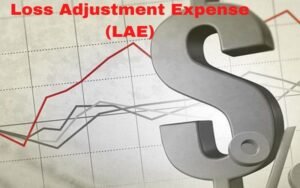What are sticky prices?
Prices that don’t change often, even when supply and demand, the economy, or costs change, are called “sticky prices.” This means that the price of a good or service stays mostly the same over time, even if the market suggests a better price.
Supply and demand, a fundamental economic idea sets prices. When demand is high and supply is low, costs go up, and the opposite is also true. Prices don’t follow this simple idea in real life because of several factors.
- How much does it cost to alter prices?
- Some pricing methods have their limits
- Customers who care about price
- Contracts for a long time
- The power of suppliers in the market
It’s like a business saying, “Our product costs $20, and we’re not going to change it no matter what!”Every product has a certain level of stickiness, just like every product has a certain level of price flexibility.
Synonyms
- Price rigidity
- Price stickiness
- Nominal rigidity
Basic ideas behind price stickiness
As a customer, you might think that prices are constantly changing. This is true for some items, but prices generally stay the same. Businesses usually do better when they keep prices the same. This helps them predict income, plan production and inventory needs, and keep customers returning.
Businesses and their decisions are also affected by prices that don’t change. One example is that a business might need to think about how much it will cost to change prices before they do so. This cost might include creating new marketing materials, updating price tags, and reprogramming systems.
Prices tend to stay the same or go down. Prices tend to stay high because businesses don’t want to lower them. After all, it could mean the quality or worth of the product is going down. Customers eventually get used to paying more. But this is a problem during a slowdown because it makes it hard for businesses to lower prices when demand drops.
What Price Stickiness Looks Like
Pepsi Co.
Coca-Cola bottles cost five cents when they were first made in 1886 and stayed that price until the late 1950s. This is a famous example of a price that doesn’t change. During that time, there were significant changes in the economy and inflation, which usually would have caused the prices of most other goods to change.
The Hot Dog at Costco
Costco co-founder Jim Senegal once told Craig Jelinek, now CEO, that he would kill him if he raised the price of their famous $1.50 hot dog and soda combo. This may be the best example of price stickiness.
The price of this popular meal hasn’t changed since 1985, even though prices and inflation have increased. During an earnings call in 2022, the company clearly planned to keep it that way.
Prices at gas stations
People who drive would say that gas station prices change more often than prices in some other industries, but the truth is that they still tend to stay pretty much the same. Even though the market prices of oil and gasoline change a lot, the prices you pay at the pump won’t change immediately or in a proportional way. This shows how resistant prices are to change.
Things from the grocery store
Prices in the food store business usually don’t change when supply and demand factors do. This is because grocery shops usually make deals with suppliers that last a long time and lock in prices for a long time.
The expectations and ability to pay of consumers determine market prices. This means grocery store brands don’t have to pass on savings to customers, even if they can make more money.
For example, let’s look at Chef Boyardee. If the price of tomatoes, which are a main ingredient in their goods, drops a lot, it’s not likely that the company will lower its prices to reflect that. The company might keep its retail prices and enjoy a higher profit margin. This is an example of price stickiness, which means that buyers don’t see a price change even if input costs go down.
Tickets for planes
The aviation business gets a lot of government money. If not for this, people in rural places would have much harder access to cheap air travel.
When this happens, governments step in to keep prices stable and ensure that most people can still afford to fly. Because of this, ticket prices stay pretty steady over time, even though fuel prices and desire for certain flights or routes change.
Services with Subscriptions
For example, streaming platforms and SaaS providers have a hard time changing their prices because their customers expect them to stay the same. Prices going up or down make people think their product is worth less, which makes them feel ripped off and eventually causes them to leave.
So customers don’t say they use “bait-and-switch” methods, subscription-based businesses either
- Allow “grandfathering,” which means that current users can keep paying the old price while new subscribers pay the higher fee.
- Raise prices for all customers with plenty of notice and lots of reasons
- Raise prices a little and give new customers deals or free trials
- Give up some of their profit.
So they don’t lose market share and maintain their reputation for putting the customer first.
Why Prices Stay the Same
Menu Prices
When businesses change their prices, they have to pay extra costs. When prices change, you might have to reprint marketing materials and signs, update price tags, reprogram systems, tell customers about the change, train staff, and maybe even lose customers (if the prices go up).
The idea of price stickiness comes from businesses having to pay to print new menus. A restaurant should only raise its prices if the extra money it makes (after considering sales volume and margins) is more than it costs to make the menu. If not, it would be wiser to keep prices the same.
Value as Seen
There is also a psychological side to sticky prices. When people see a cheaper product or service, they might think it isn’t as good as similar items that cost more. Because of this, dropping prices will hurt sales if customers think a lower price means less value.
Worry about price wars.
If only a few companies control the market and set prices, the other companies will probably keep their prices stable so they don’t start a price war and lose market share. Barriers like patents or high start-up costs make this behavior more robust by keeping new rivals out and making prices competitive.
One of the best ways to show how price stickiness works is with a curved demand curve. It shows how companies use competitor-based pricing to keep the market in balance and avoid the unpredictable results of aggressive pricing tactics.
More sales and happy customers
Customers find it annoying and hard to understand why prices constantly change. This can make customers less loyal and less willing to buy.
You and your business may be affected by labor costs and supply and demand, but customers don’t care about those numbers. They are only interested in how much your goods cost.
Dealing with the market and getting better at what you do are both parts of your business plan. By keeping prices the same, you can make the most money possible without losing much on your earning margin.
Contracts for a long time
Many businesses (B2B) have long-term contracts that last for several years. These contracts are prevalent in manufacturing, logistics, wholesale, and channel sales. Usually, the parent company sets a price that stays the same for the whole deal, and the seller must pay for any extra costs.
There’s a good reason for this: the seller wants to make sure that the prices of its products are the same as those of its store partners or resellers.
It’s a good thing most of the time. That means you don’t want to switch partners in the end. Instead, you want to focus on quality, delivery times, and dependability in a lasting business relationship.
Effects of Sticky Prices on the Economy
Keynesian economics says that fixed prices and pay stop the market from naturally balancing itself.
This is a full explanation of what that means:
Levels of Production
Money works like a machine. It’s supposed to make the changes independently to keep everything running smoothly. In a fully responsive market, prices would go up quickly when people suddenly want to buy more(an increase in aggregate demand). That way, companies would know to make more things to meet the demand, and there would be no shortages.
The idea of Keynes shows that prices don’t always go up as fast as they should. That is why companies may not know they need to make more. When there aren’t enough things to go around for all the people who want to buy them, a shortage happens.
On the other hand, when people want less (a drop in demand), prices should go down. For businesses, this would mean they need to slow down production. But once more, if prices don’t go down and stay higher than they should, companies may keep making too much, which can cause a buildup of goods that haven’t been sold.
Prices and wages aren’t changing quickly enough, making the economy’s imbalances worse and making it harder to get back on track after a slump. The machine’s gears are clogged, so it can’t respond quickly to changes. As a result, it makes either too much or too little of what people want.
The market is not working well.
Prices in a market that works well represent the information that people can access. Sticky prices happen because markets don’t work “efficiently” because of mistakes and delays made by people. People who buy and sell can’t rely on prices as signs when they don’t show the natural balance between supply and demand.
When an item is set too low, for instance, a buyer will think it’s worth a lot less than it is and may even believe something is wrong. It’s harder for markets to clear quickly when prices don’t move. This means buyers and sellers have more difficulty getting the right price.
Changes in employment
When prices are sticky, changes in demand will not affect prices but the amount that is made. This means that when demand drops, companies might not lower prices right away. Instead, they might cut back on production and lay off workers.
This increases jobless rates during recessions, which is explained by the sticky wage theory. It wouldn’t be straightforward or moral for employers to cut workers’ pay, so they’re more likely to fire them. This happens a lot in the SaaS business. In the US tech industry alone, from January to November 2023, almost 230,000 people lost their jobs.
Price rises
When looking at the economy as a whole, price stickiness is one thing that affects inflation. The market takes longer to respond to changes in supply and demand when prices stay the same. This makes the inflationary period last longer.
This can sometimes cause inflationary loops, where people act in ways that show they think prices will keep going up. Prices are more challenging to change downward, so this creates a cycle of price rises that never ends.
Cycles of Business
The business cycle, the typical pattern of times when the economy grows and shrinks, is also affected by prices that don’t move.
It takes longer for markets to respond to changes in demand when prices are sticky. This means that demand-driven shocks—changes in customer behavior that come as a surprise—can have a more significant effect on the economy, strengthening business cycles.
Sticky pricing can make it hard to make the most money from SaaS.
One of the best things about SaaS prices for customers is that they can plan. It makes things very hard for sellers. The prices of SaaS are some of the least affected by changes in the economy.
What it costs to change prices
Companies that make software use a mix of flat-rate, tiered, and usage-based prices. Adding a few bucks to the price tag isn’t the only way to raise prices. There are various things to think about.
When a customer adds more users, the flat rate usually goes up. However, this doesn’t always consider the higher server and support costs that come with it.
Changing the price to one price level might be a good idea if its features are much more helpful. But you have to be careful when selecting features to ensure they add value to the product.
- Adding more usage-based features will help your bottom line the most, but it will severely hurt your best users.
- Many SaaS companies carry over old customers (at least for a year). So, they won’t have to raise prices for present customers, and they’ll be able to make the most money from new customers.
Contracts for a long time
Long-term contracts with end customers make it hard for system designers, value-added resellers, and managed service providers to set prices for SaaS.
Customers like these often get good price deals because they sign deals that last years and buy a lot. So, these partners also don’t want to change prices in the middle of a deal because that could hurt their cash flow and reputation.
This makes things stable, but it also makes prices stick because they can’t change quickly in response to changes in the market.
Loss of customer satisfaction
Customers who subscribe to a SaaS program agree to have the same experience every month. Also, these members are from other businesses, which means they’re probably going through the same problems you are.
Pressure from competitors
They might love your product and think it’s okay for you to raise the price if you do. If there are cheaper options, though, they’ll take your customers.
An easy way to get around this is to add more value to your product to make it worth more. If you need to fight price stickiness, new products and minimal, easy-to-understand price changes will help, especially if your business is still young.
Loss of Customers
It can cost up to seven times more to get a new customer than to keep an old one. If there’s a big chance of losing customers when prices increase, it’s hard to defend the higher prices. It’s much more expensive to get new customers than to keep the ones you already have. This is especially true if most of your customers won’t stick around.
Keeping employees’ wages the same
When the economy is terrible, companies can’t lower wages because workers won’t want to do less work for less pay, especially if they’re already having a hard time paying their bills.
Instead, SaaS companies might save money in the short run by letting people go. It’s more likely to make things less efficient in the long run because they’ll lose skilled workers and have to pay more to hire and train new ones.
What can price optimization software do for you?
Prices that don’t change can be helpful sometimes. You can still use price optimization tools to set a price range more in line with how the market is right now within your customers’ price sensitivity window.
It looks at competition, demand, customer behavior, advanced algorithms, and machine learning to find the best price for a good or service.
Some businesses, like airplanes, use real-time pricing (or another type of dynamic pricing). But you can also use it to set the best price right away. You’re protecting yourself from the risk of putting too many customers at a price that you can’t keep up with as your costs rise.
In short, price optimization software helps businesses change prices almost instantly, and you can use it to avoid price stickiness, which you will have to deal with anyway.




































